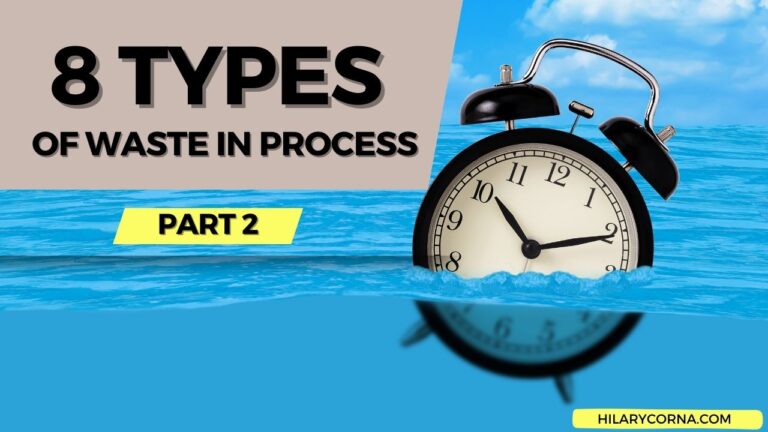In last week’s blog, I shared with you the importance of categorizing your process problems and the first four types of waste in process: waiting, motion, inventory, and overproduction. Today I’ll be sharing the last four categories into which process problems can fall.
Looking at problems as a category helps us see based on fact and logic—what is happening in the operation. It makes it about the operation, not the person or a specific department, which is one of the principles of this work in process improvement. Here are the remaining types of waste in process:
#5 Defects
Defect wastes are efforts caused by rework and incorrect information. This is by far the number one thing I see in services because they are a human-to-human experience. If you’re doing things that are either mistakes, duplication of work, rework, or having to go back and do something, it could be due to not having the right contact information within a CRM.
It could be that you do not have the right delivery address, so the final product is getting delivered to the wrong place. This is very normal because, in service businesses, it’s easy to go under the radar. It’s not a physical object, like in manufacturing, where you can easily see something is wrong. You can readily notice that you used the wrong piece. In a service business, a defect can easily be hidden, especially now that we’re all operating on cloud software for the most part.
#6 Transportation
Transportation waste includes unnecessary movements of products and materials. This shows up a lot in service-based businesses, even though it seems like a manufacturing problem. A company I worked with last year does landscape installation, and one of the forms of waste that they found was in transportation. They moved a lot of the product around prior to and after installation, and that was a form of waste.
#7 Non-utilized talent
If you have someone in a role where they’re actually more qualified to do more, that’s a form of waste. Underutilizing your people’s talents, skills, and knowledge is a form of waste. For example, an executive assistant who is highly competent in strategy, innovation, and leading teams is stuck doing only EA activities such as scheduling and note-taking (we see this a lot!).
#8 Extra processing
This type of waste is always new to people. Extra processing means doing more work or delivering higher quality than is required by the customer. It can come in a lot of hidden ways. For instance, a customer is ready to buy, and you spend too much time on a quote that they’re not paying attention to. You always have to weigh in if the extra thing you are doing is something a customer cares about. Otherwise, it’s just another form of waste.
Make your life easier by categorizing your problems
When you start categorizing your problems, you’ll start to see them in a different light. You’ll no longer see them all lumped together in this opaque, ambiguous pool of issues. It gets easier to solve now that you can separate them.
Let me know which type of waste was the biggest or most significant in your operation and how this blog was helpful for you. Reply here or shoot me a DM on LinkedIn, and connect with me if we’re not already.
In love and respect,
Hilary Corna














